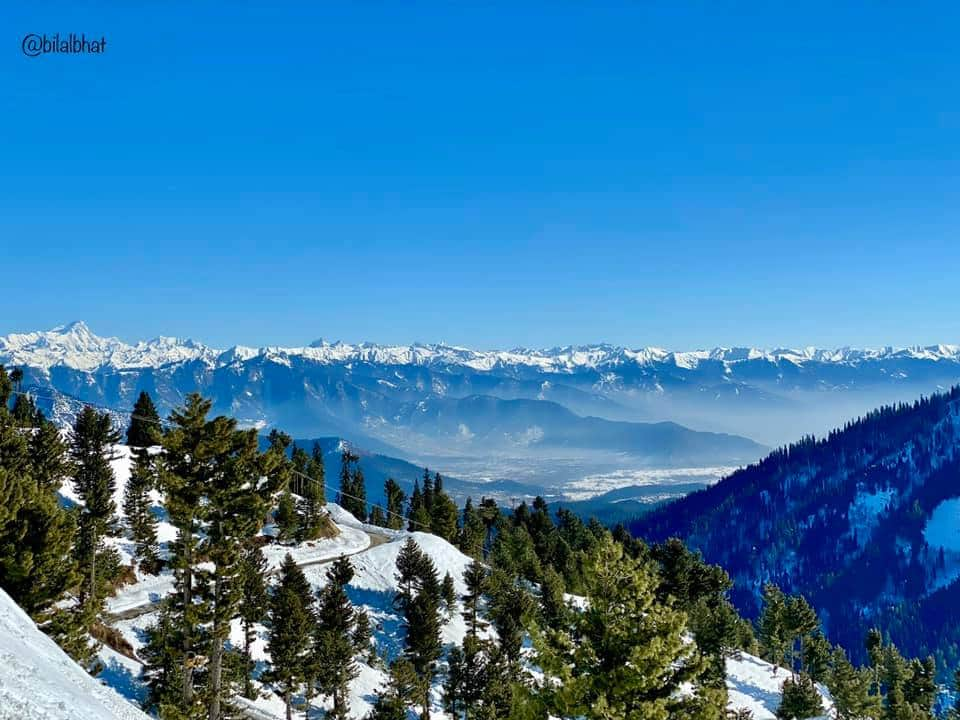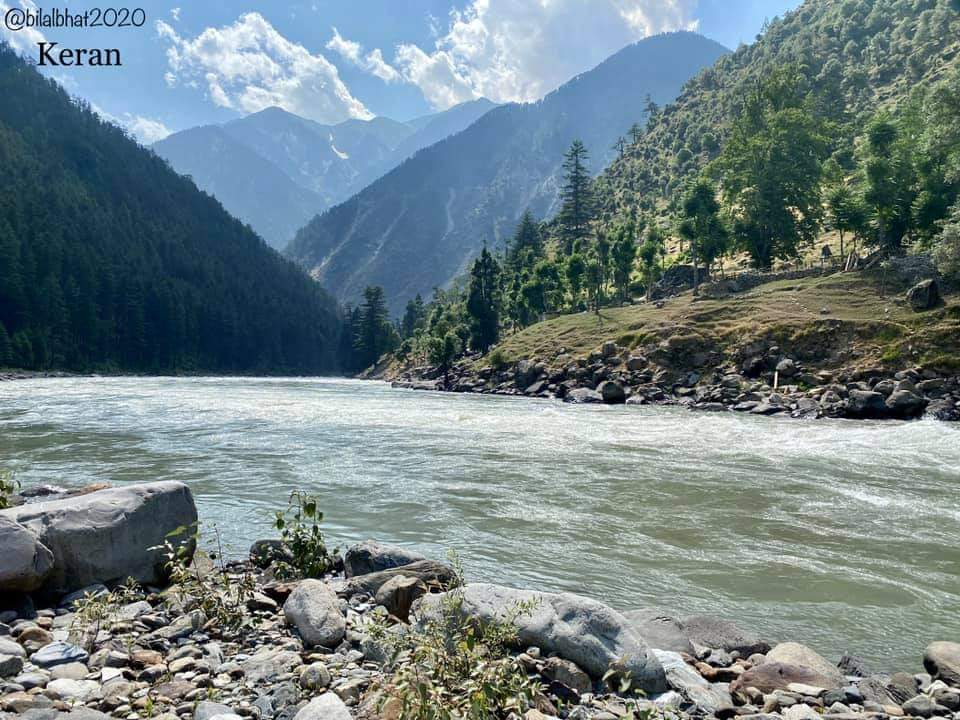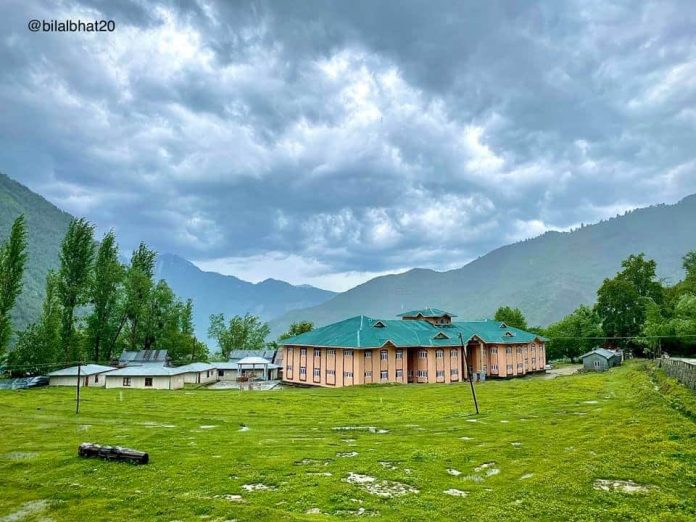By Rahmat Bhat, TwoCircles.net
Like a jewel in the crown of a king, sits the beautiful valley of Karnah at Shamsbari range in north-west Kashmir. Located in district Kupwara, this tehsil is nearly 175 kilometres away from summer capital Srinagar. The long stretch of a road ending at Sadhna pass and Chowkibal is prone to multiple disasters. Avalanches, landslides and accidents are everyday events while crossing the hilly tract to Karnah.
Life without adventure is bland and the complexity of life increases if the routine gets smooth. Risking it for a need is the norm in steep landscapes and gorges. The scattered settlements around the mountains have such tenacity and grit which is required to survive in this terrain. It is amazing to know that king Karan of Mahabharata and Lord Krishna travelled so far to give the town its name ‘Karnah’ and the name ‘Kishenganga’ to the river that flows here. There is also a bridge named after the ‘Pandav’. Later Buddhism graced the place as the fourth Buddhist council was held in this region. This later led to the establishment of the Sharda University. Then came Islam, which continues to be practised till today. This brief flashback is a reflection that this region absorbed and reflected the transformation occurring in the subcontinent, be it in the ancient, medieval or the modern period.

Unfortunately, in contemporary times due to varied reasons, Karnah has missed the opportunity to prosper like other regions. The sound of shelling and cross-firing on nearby LOC resonates on a regular basis is a constant reminder for people of the political turmoil on either side. The people of Karnah are well aware of their strategic location and the ensuing enmity between the borders. However, they hold no bitterness for either. This ancient site was once a prosperous trading point between the subcontinent and the rest of the world. The fate of border towns elsewhere in India is similar and the inhabitants have suffered the wrath since 1947. The year of Independence for the subcontinent from the yoke of colonial British rule was, in reality, a year of division for the frontier regions.
The journey to Karnah is adventurous and the most striking observation one makes is at the Sadhna pass where the valley of Karnah is cut off from the Kashmir region. It is another independent trough, like a valley that has been geologically carved out. The border is closer to Pakistan from here and is uneven. Karen and Machil are again part of this landlocked landscape. Teetwal is the farthest point from the Indian side. It is at this place where the emotional sentiments rise high just to see your blood relatives standing across the border without any hope of meeting them. The only gesture probably is you can wave at each other. These gestures mean that we are alive, we are fine and we are separated. They are destined to live across the same river, utilise the same water resource, cultivate the same landscape but cannot share or celebrate life together.
The tomb of Sufi saint Sain Mitha Baji that lies at the river bank between Pakistan and Karnah unifies both sides in mystic thought and through yearly Urs held here. One may stand on the bank at either side for hours – gaping and longing for the other side. It is surprising to know that the fields of Sadpora remain isolated or independent from sunset to sunrise when the Indian gates are locked from behind. This village known as ‘forward Sadpora’ stands aloof and alone till the morning. The farmers of Dhani Sadpora have a unique way of watering their fields. The water is pumped through the Pakistani side towards the Indian fields for a price. The money for use of water resources is pooled from farmers, tied in a bag and thrown on the other side. Lately, an attempt was made by the Indian army to pump out water by installing a motor. This effort could not achieve its motive fully and the traditional method of buying water from the Pakistani border village continues.
Remarkably the topography and the endowments of this valley are hidden treasures of Kashmir. After visiting this place, it appears like the paradise has a beautiful palace with the doors locked and gates shut. The locks seem to be tightened every now. The security measures are beefed up at every step from here. The common folk are unaware of the enmity but understand the broader contours of political differences. The meandering river Kishanganga/Neelam and LoC divided their lands, families and saints. Yet their hearts on either side beat in resonance and they eagerly wait for their kith and kin to return from the other side. This quiet sleeping town was once full of traders and businessmen who have fled the region since 1947. The demand and supply for commodities and the prospects for commerce remain dormant. The political lines of control have silenced the opportunities to connect and grow in tandem. The people of Karnah are inaccessible due to inclement weather and climate. The hilly tracts are closed very often. Life moves with a different pace here.
The huge mountains and their greenery at the backyard of every house leave one mesmerized. In the post disaster-hit world the authorities, the trading lobbies and the political heads must relook at the potential prospects of this border town. This subdivision must be replaced as a trading link, a tourist hub and strategic road link rather than a mere defence cross-fire station. Establishment of military outposts is inevitable but it attracts no harm if the region is opened for Kashmir and Jammu for legible interests. The construction of a tunnel at Chokibal probably could solve a major problem.

In the socio-economic background of the present world, there is no wisdom in keeping one of the strategic locations underdeveloped and out of reach. This reminds one of the ‘Belt and Road Initiative’ of the neighbour. We can definitely have a ‘Bridge and Tunnel Initiative’ if not a massive program at present. The upcoming political aspirants, representatives, environmentalists and trade merchants need to have a round table discussion before chalking out a plan for such places. Today you and I are no more strangers. We are interconnected with technology and transport. We gain and lose mutually. If this region develops, possibly it will benefit others too. The spillover or trickle-down of growth is visible in the immediate surrounding. Karnah is no exception but holds the key to greater prospects of connecting to the underbelly of central Asia. We need to look beyond Pakistan and that requires a broader plan to engage with other central Asian countries. It will be possible only if our neighbours agree to collaborate at that level.
The present conditions do not suffice to stretch out hands far and long in friendship towards either side. But till then we can open and unlock the closed doors for the region internally. Airlifting old, sick and pregnant ladies has come as a relief. Infrastructure, education and healthcare have been relegated to the background for the sake of security and defence. The peace of the common folk of this region is often disturbed by fighter jets day in and night. Karnah also lives a 2G life in the 4G world similar to other areas of the Union Territory during crisis times. Consolidation of national territory is the main concern for the political class and is traded off for the development of this subdivision. Nevertheless, the tehsil is moving at a snail pace amidst all odds of life.

